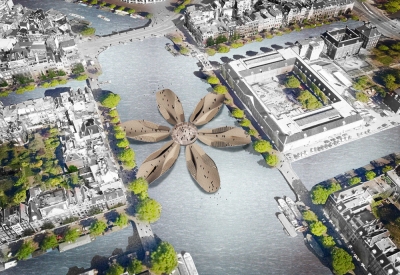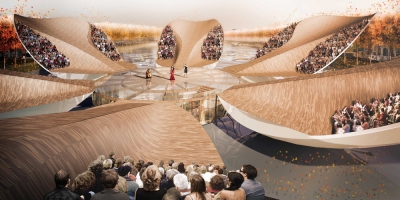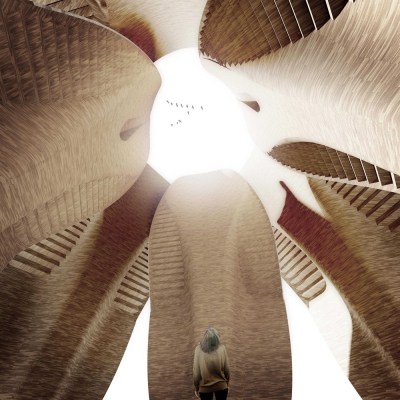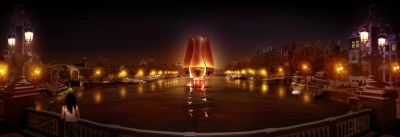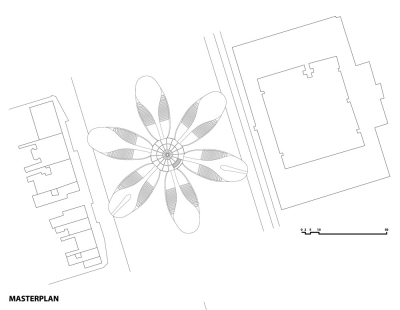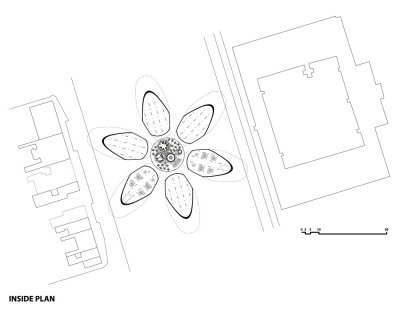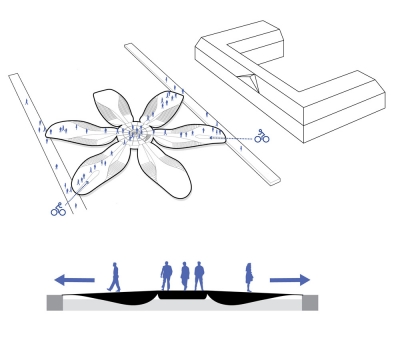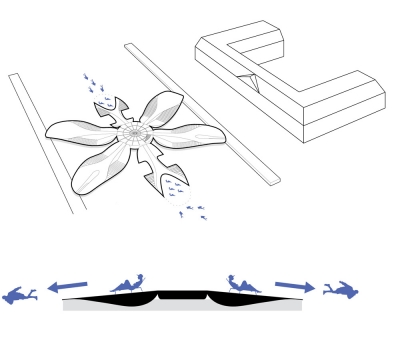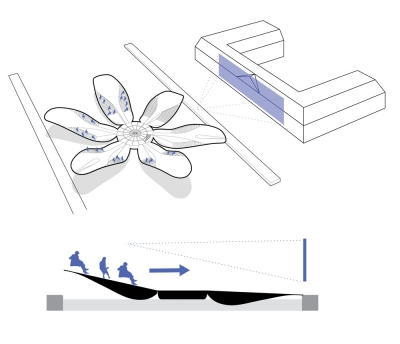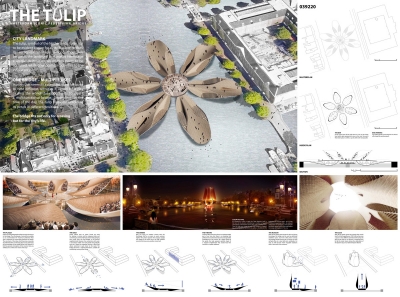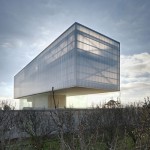Project: "The Tulip" Iconic Pedestrian Bridge
Designed by Michael Labory & Bertrand Schippan
Location: Amsterdam, The Netherlands
Website: www.michaellabory.com
The Tulip is design for Iconic Pedestrian Bridge in Amsterdam coming from Michael Labory & Bertrand Schippan, this much talked about competition for the design was hosted by [AC-CA]. Michael Labory & Bertrand Schippan are sharing with us more images and their design description of the project with us after the jump:
From the Architects:
City Landmark. The tulip, symbol of the Netherlands, turns out to be evident choice for a city like Amsterdam. Its recognizable shape among thousands becomes the landmark that makes Hermitage a unique destination, an address never to be confused, while offering many activities to the inhabitants.
One Bridge – Multiple Uses. In a city that seems in a constant quest for space to host different activities it would be a pity to miss the wonderful opportunity to create a multifunctional bridge. Depending on the time of the day, the tulip blossoms unfolding its petals in different positions.
The Bridge is Made Not Only for Crossing but for the City's Life!
The Plazza. In this scenario all the petals are flat out as if en révérence to Hermitage. Thus the beauty of natural form enables us to accommodate the maximum pedestrian flow and to optimize the connectivity between the banks. The very heart of the tulip, which becomes crescendo of pedestrian flows, is the best place to stop and enjoy the surroundings in the middle of the river channel, to feel the genuine atmosphere of the country. Here you will discover a whole new vision of the city!
The Deck. Dutch culture rests on water. Canals are used for skating in winter and for enjoying shade and swimming in summer. We have all seen kids plunging into canals from the Red Bridge in the Borneo neighborhood. However the connection with water is not always visible. Two main petals that gradually end up in steps join together forming a deck that allows swimmers to get closer to the water. The bridge becomes a sophisticated beach, suitable for sunbathing, among other things.
The Cinema. Why not enjoy an outdoor cinema with the Hermitage itself as a screen on warm summer nights? The petals opposite the museum would rise slightly in the same way as for the Theaterscenario forming a cozy outdoor movie hall.
The Theater. Culture in all its marvelous forms is an indispensable part of our lives, but there is no denying that philharmonic orchestra has become a recognizable embodiment of its essence. By a slight raising of the petals the tulip acquires optimal shape of a stepped amphitheater that would host free concerts to a public audience.
The Museum. With all the petals raised except for the one facing Hermitage, the bridge can be used as additional exhibition space. Such “art in the street” concept will engage people passing by in Flemish art and will give the art a new kick-start worldwide. Art may as well become more enjoyable outdoors than in the walls of the museum.
The Club. With all the petals raised the closed tulip reveals itself in its full magnificence. THE CLUB can become a space to host different activities both during the day and at night. It can become a meeting point for all the music boats during the celebration of the Queen’s day of our beloved Queen Beatrix.
The Bar. In the central part of the tulip there is a bar on the water level which gives perspective view on the river. You won’t find better place to relish a cup of coffee with stroopwafel.
Bike Parking. Two widest petals connecting the two shores offer large bike parking space.
Color Festival. By changing its color at night the Tulip disguises itself in the form of city lantern contributing to creation of special atmosphere of Amsterdam. Each color marks a certain event. Thus the Tulip can change its color into orange for Queen’s day, it may be red for Valentine’s day, yellow – to celebrate the beginning of summer, black – to as a sign of national mourning, white – for national celebrations or marriages or even pink for Gay Pride.
Natural colors of the tulip reflect the unique atmosphere of the city.


